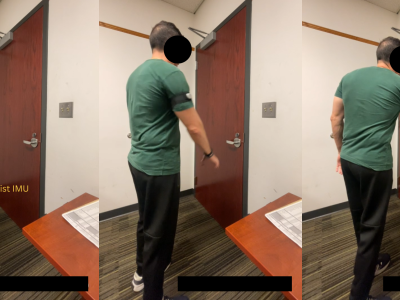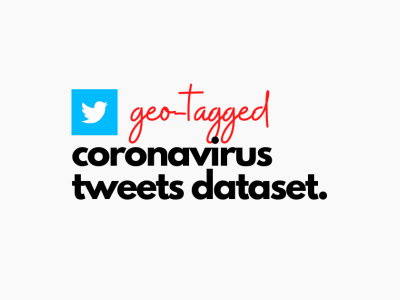GestDoor: IMU-Based Door Entry Biometric Dataset

- Citation Author(s):
-
Mohamed Ebraheem (University of South Florida)
- Submitted by:
- Tempestt Neal
- Last updated:
- DOI:
- 10.21227/bf53-nt09
- Data Format:
Abstract
The GestDoor dataset contains wearable sensor data collected to support research in biometric authentication through arm movements during door-opening interactions. Using two 6-degree-of-freedom (6-DOF) inertial measurement units (IMUs) worn on the wrist and upper arm, 11 participants performed four types of door-opening tasks—left-hand pull, left-hand push, right-hand pull, and right-hand push—across up to three sessions. The dataset includes 3,330 samples comprising accelerometer and gyroscope signals at 100 Hz, along with session metadata. GestDoor enables the exploration of motion-based authentication, behavioral biometrics, and activity-specific security systems, particularly in the context of smartwatches and ubiquitous computing.
Instructions:
Instructions for Using the GestDoor Dataset
1. Dataset Contents
The dataset includes the following components:
- IMU Sensor Data:
For each participant, time-series recordings from two 6-DOF IMUs (accelerometer + gyroscope) at 100 Hz. Each file contains:- 3-axis acceleration (X, Y, Z)
- 3-axis angular velocity (X, Y, Z)
- Orientation (quaternions)
- Timestamps (milliseconds)
- Metadata File:
Participant demographics (age, sex, height, dominant hand), session number, and number of samples per session. - Session Labels:
Each sample is labeled with one of the four door-opening activities:- L_PUSH (Left-hand push)
- L_PULL (Left-hand pull)
- R_PUSH (Right-hand push)
- R_PULL (Right-hand pull)
2. File Format
- Files are provided in
.csvor.jsonformat (specify actual format). - Each row represents one timestamped sample from a specific IMU sensor and contains the full feature vector.
3. Directory Structure
/GestDoor/
├── Participant_ID/
│ ├── session_1/
│ │ ├── wrist.csv
│ │ ├── upper_arm.csv
│ ├── session_2/
│ └── ...
├── metadata.csv
├── labels.csv
└── README.md
4. Recommended Usage
To utilize this dataset:
- Data Loading:
Use Python (e.g.,pandas,numpy) or MATLAB to load CSV files. Each file can be parsed using standard libraries for time-series analysis. - Segmentation:
Each sample has already been segmented from raw recordings; no additional segmentation is required. - Feature Extraction (Optional):
You may extract statistical and frequency-based features, as done in the original study, including mean, RMS, variance, kurtosis, and spectral features. - Model Training:
Common machine learning models (e.g., SVM, KNN, Random Forest) or signal-based models (e.g., DTW) can be used for classification or authentication tasks. - Evaluation Protocols:
The dataset supports:- Intra-session experiments: Train/test within a single session.
- Cross-session experiments: Train on one session, test on another to assess permanence.
- Suggested Applications:
- Motion-based user authentication
- Gesture recognition
- Biometric permanence studies
- Smartwatch security applications
- IMU-based behavioral analysis
- Sensor fusion experimentation
5. Educational and Research Use
This dataset is made available for educational and research purposes. It can support coursework, capstone projects, graduate theses, or experimentation with biometric and human activity recognition systems.
6. Citation
If you use this dataset, please cite:
M. Ebraheem and T. Neal, "GestDoor: Gesture-Based User Authentication for Door Entries Utilizing Wearable IMUs," in Proceedings of the 19th IEEE International Conference on Automatic Face and Gesture Recognition (FG 2025), 2025.
 31 views
31 views







